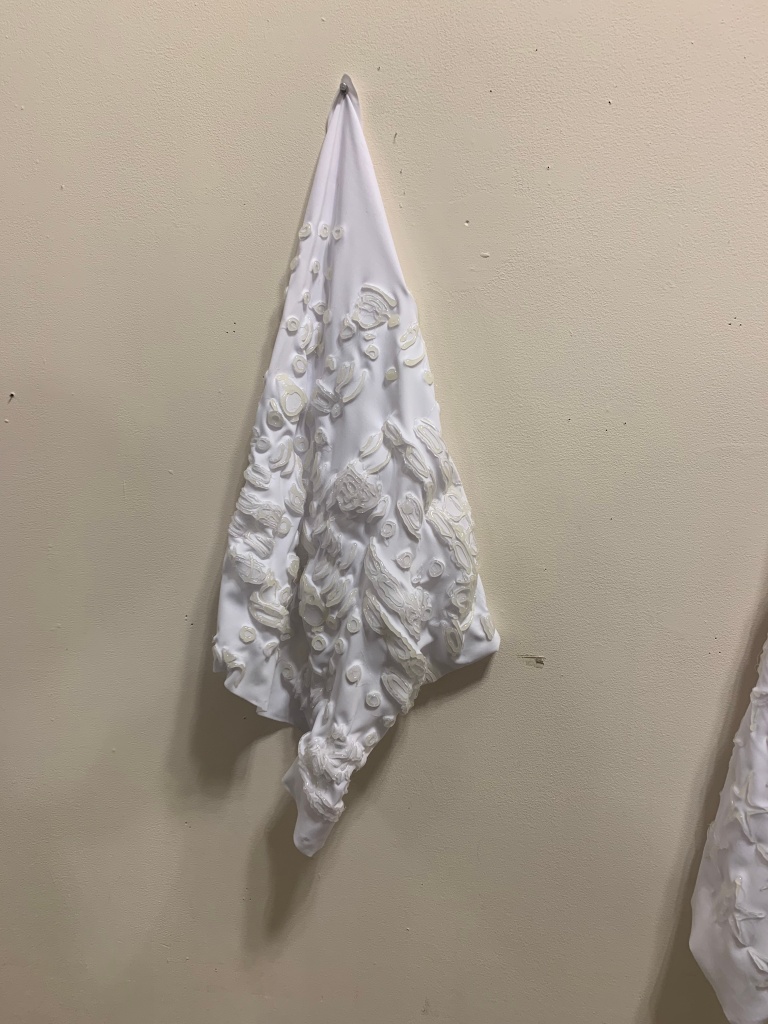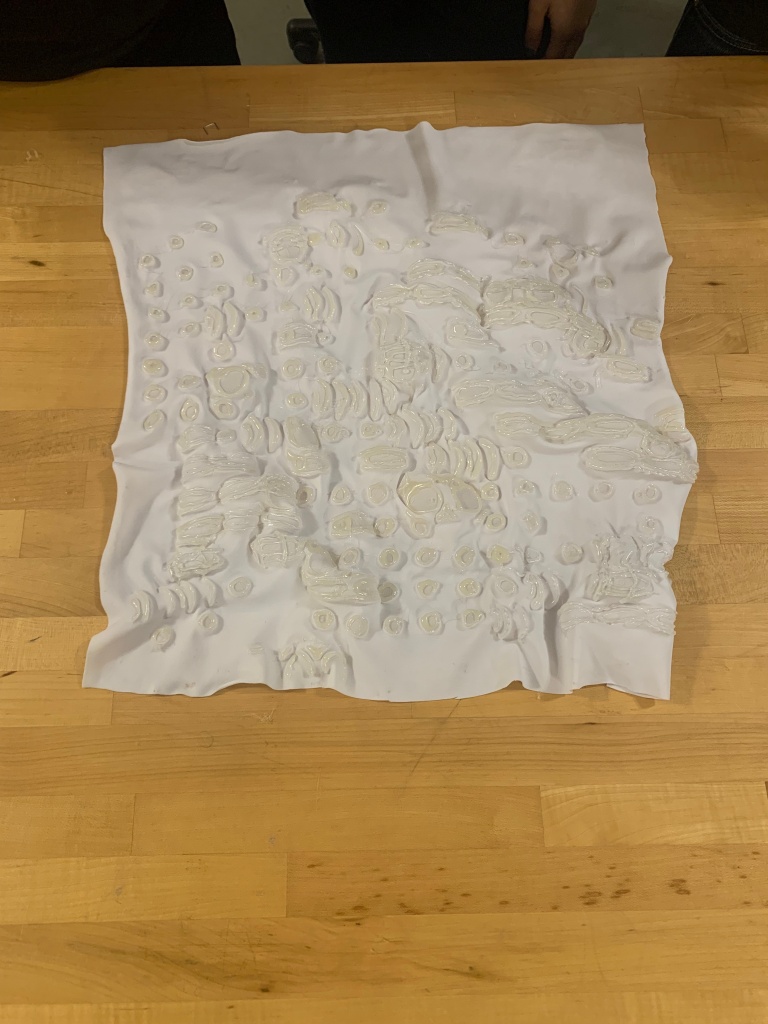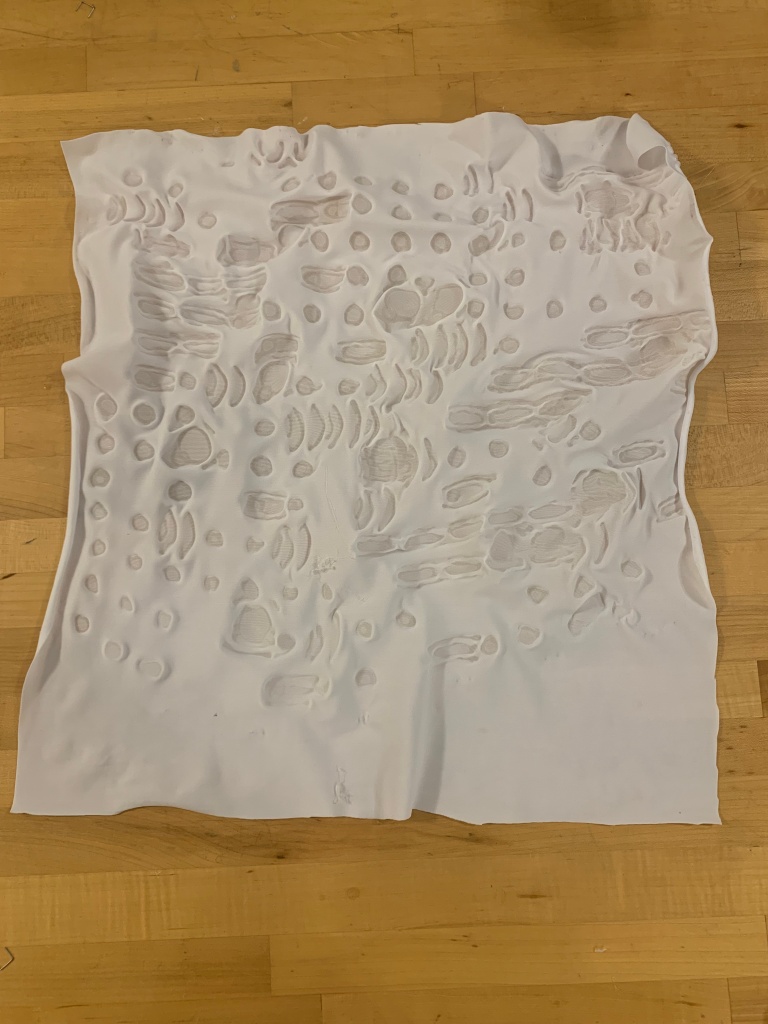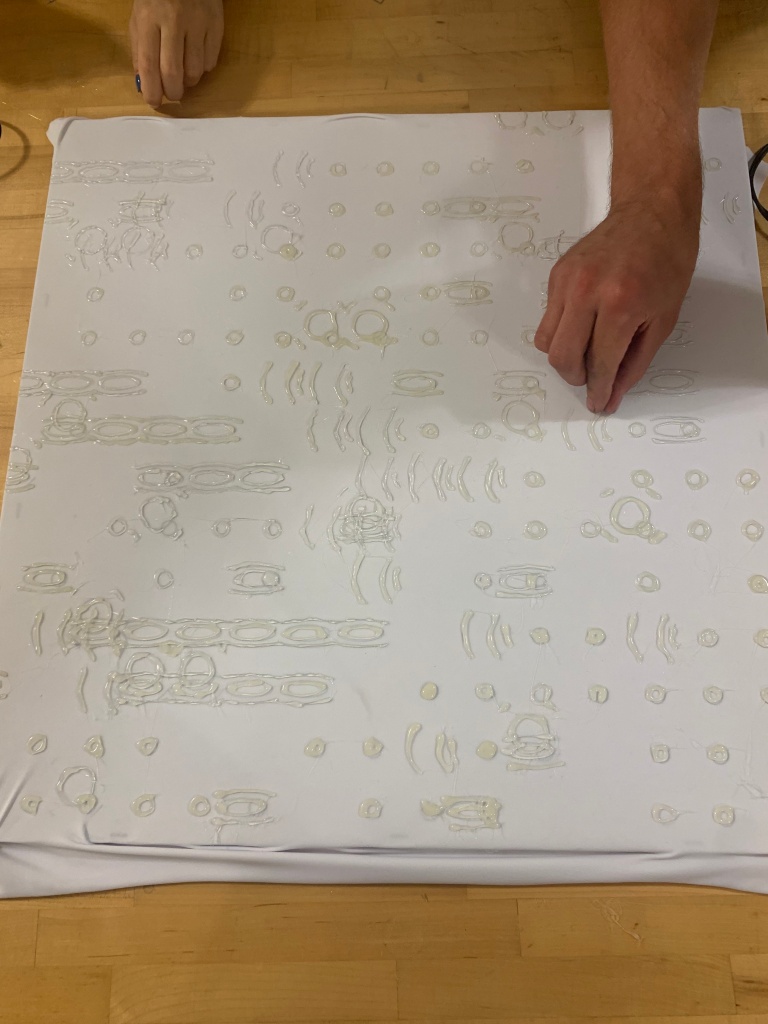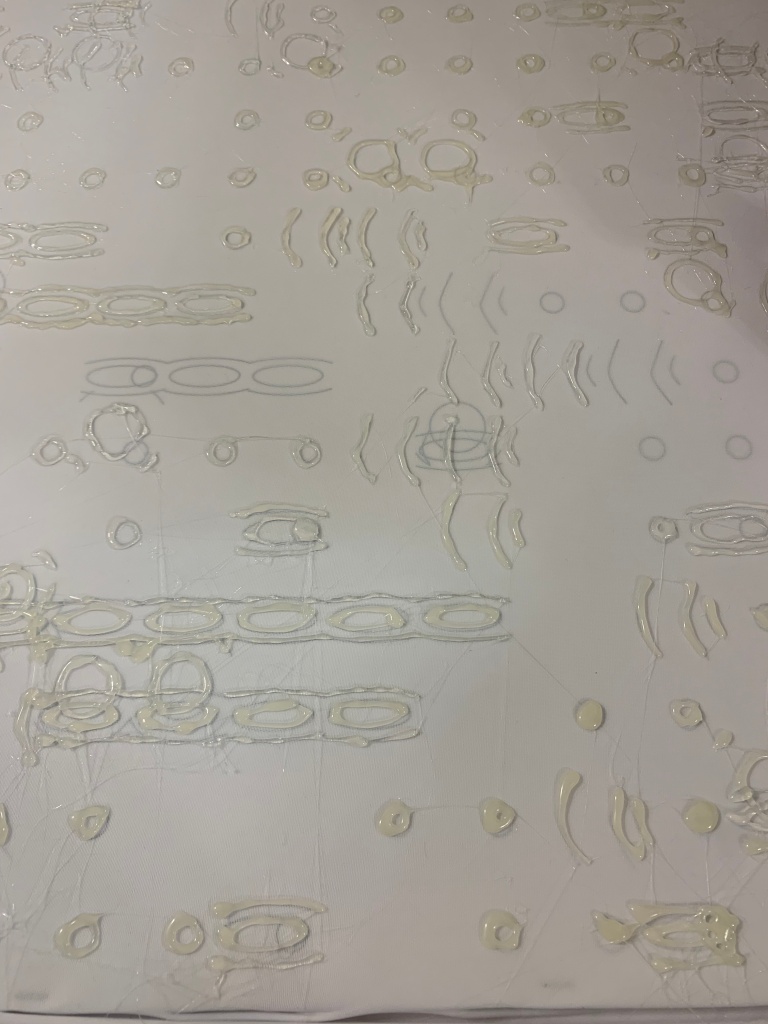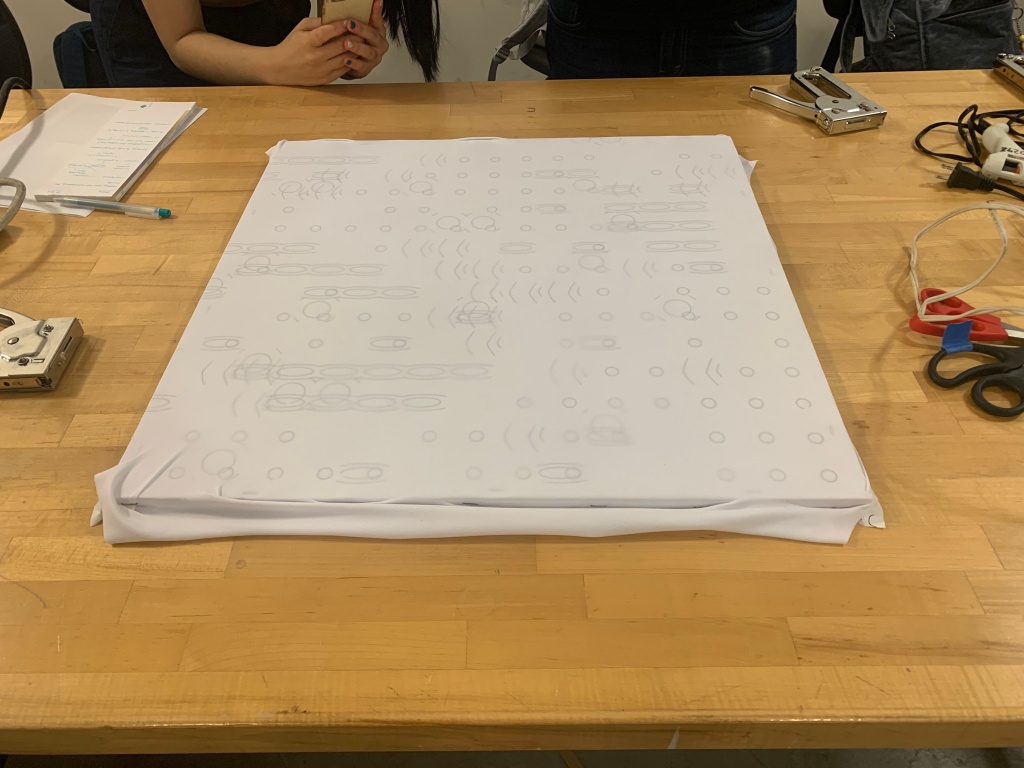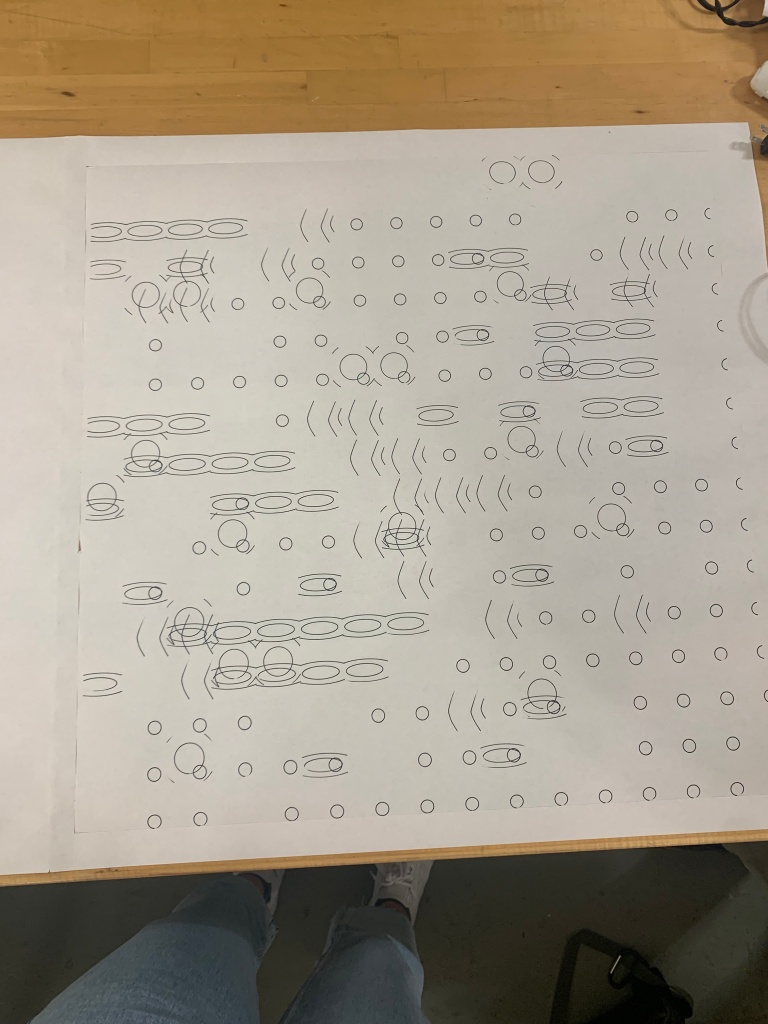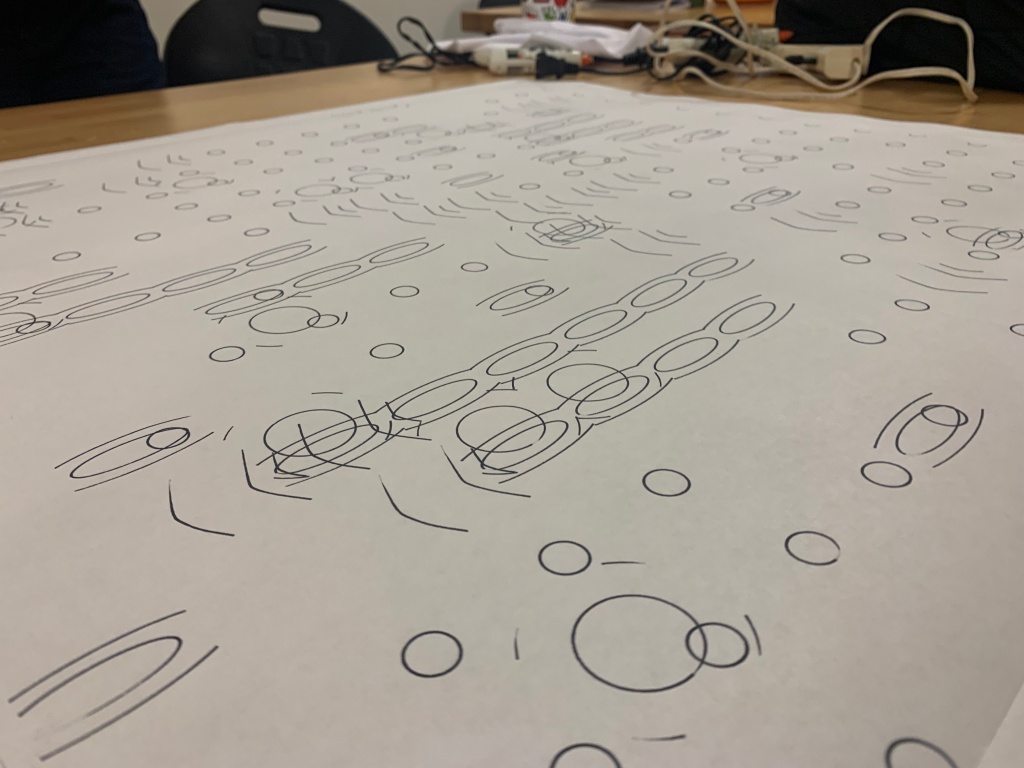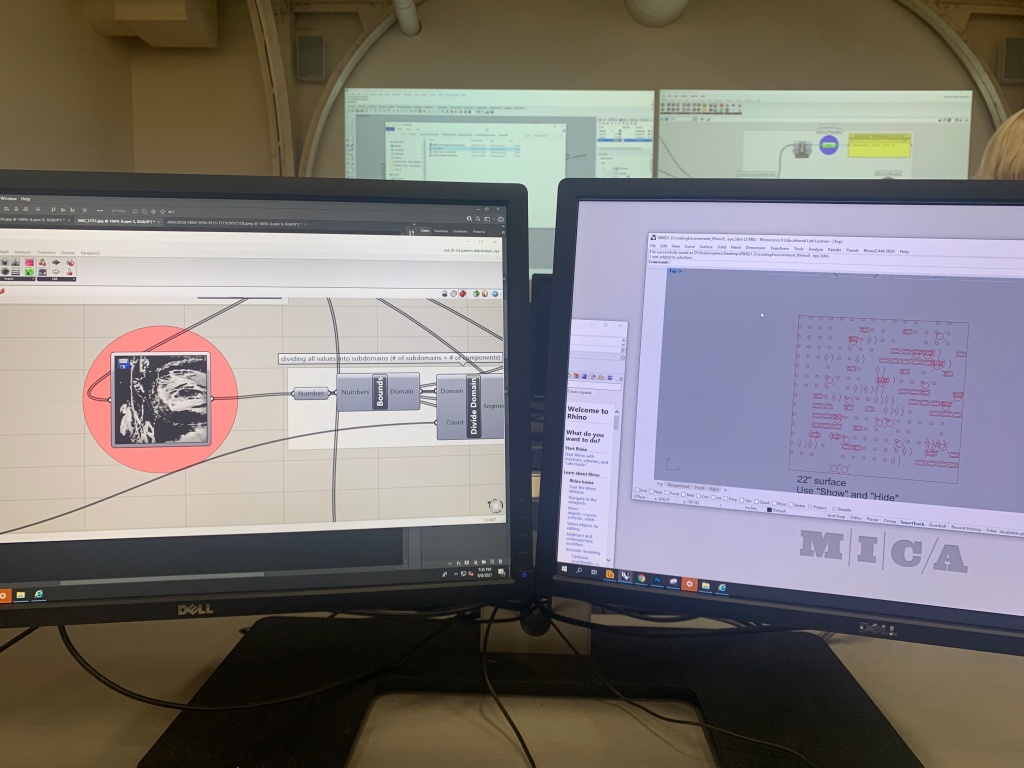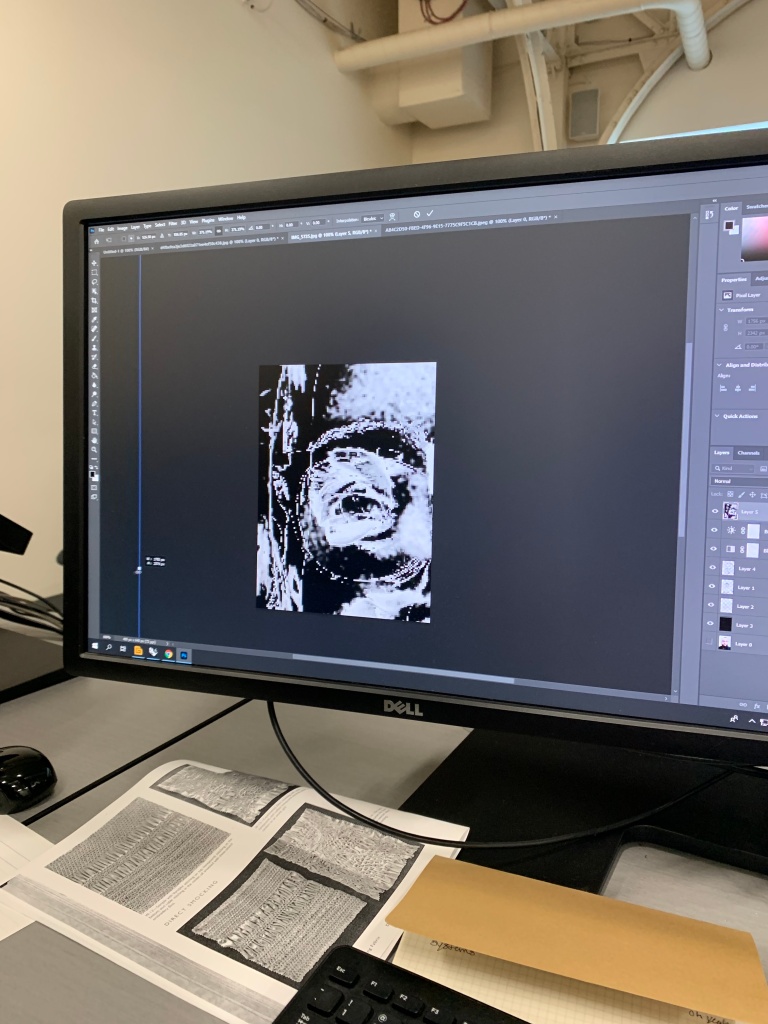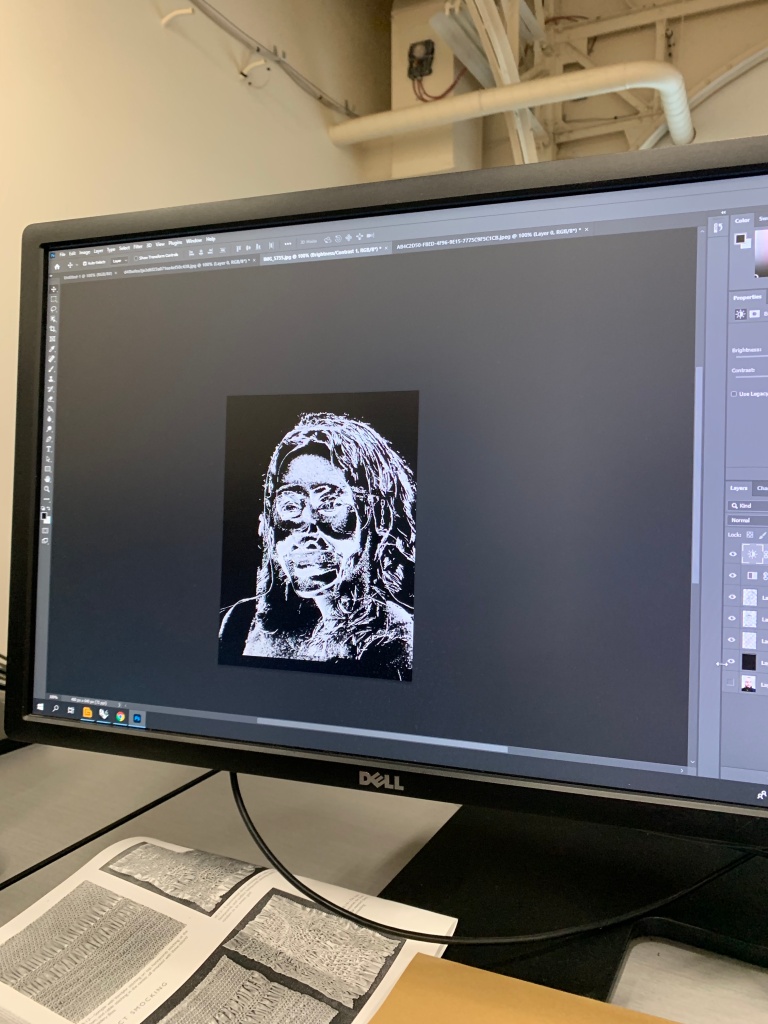During Marantha Dawkins’s lecture, I was intrigued by the idea of identifying the endpoints of bounded objects versus field objects. She utilized the example of the boundary of a tent versus the boundary of smoke coming from a campfire. This idea of measuring the threshold of nature or objects was a rather innovative idea.
The basis of the workshop was to map a natural element into a constructed algorithm to generate a new pattern, one that essentially mimicked or recorded the variable of the natural object. The pattern of each group was altered by the input of information that was being mapped as well as the selection of imagery chosen to depict the input.
My group and I decided to layer photographs of each of our faces into one to generate one image. The images were edited to be in black and white with a high contrast level. The image of our faces joined together was a close-up of our right eyes. We chose to concentrate on one specific area to get as much detail as possible. We choose to map a total of three different color contrasts for our new pattern.
The symbols chosen to depict each different color contrast became relational shapes that alluded to the form of the eye or the mechanics of an eye.
The high contrasted image of our eyes was placed into the grasshopper script and generated a pattern of overlaying moments, which interestingly enough was a process we had previously created in Photoshop.
After the printing of our constructed pattern was complete, we placed it under a sketched fabric for tracing. We chose to layer glue at the interesting points of our pattern so the end result would be as accurate as possible. One of our chosen symbols allowed for the directional pull of the fabric to create variations of height.
The final product of our pattern resulted in a series of concave and convex elements/moments that were constructed by the selection of our symbols.
